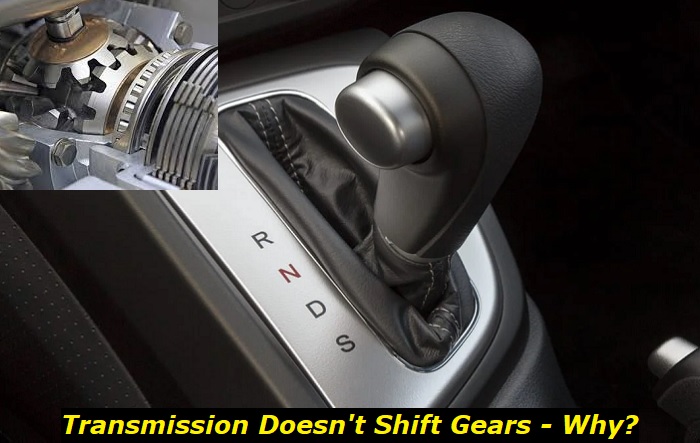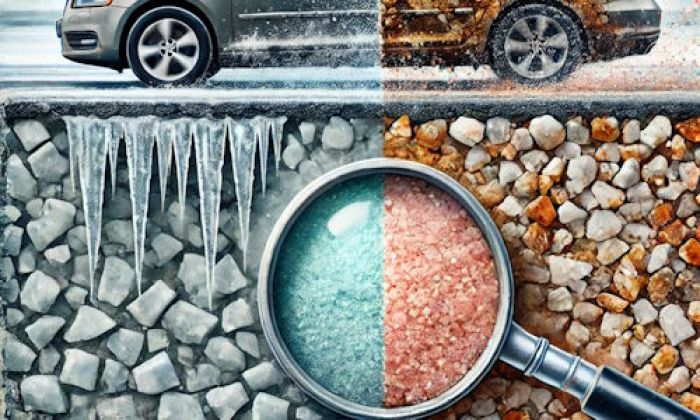A vehicle's transmission is the system that transfers power from the engine to the wheels. It does this by switching gears. The transmission also plays a huge role in controlling your vehicle. Transmissions are categorized into two primary classes; manual and automatic transmissions. In manual transmission vehicles, the driver has to manually execute gear shifts, while in automatic transmissions, the system automatically does the gear shifting for you.
Transmission no-shift problem highlights
- Level of importance:High
- Reasons:Control module failure, low fluid,badfluid, mechanical issues
- Needed expertise:High
- Needed tools:Professional tools set
- Time taken:5-10 hours
- Can you drive? Yes, if some gears engage
- Possible issues: Fatal transmission damage, car stationary.

Why My Transmission Won't Shift When Accelerating
The following are some of the reasons your transmission won't shift gears when accelerating.
1) Problems with the Transmission Fluid
Automatic vehicles use transmission fluid to function correctly. The torque converter, a crucial part of the automatic transmission, relies entirely on the transmission fluid. This requires the ATF to be always clean and at the right levels. However, dirt and debris can accumulate in the transmission fluid over time. This can cause several problems for your vehicle.
For example, dirty transmission fluid causes the vehicle to die off when you shift into Drive or engage the Reverse gear. It can also lead to power loss, rough shifts, or transmission slips. In the worst-case scenario, the transmission may refuse to shift gears when you are accelerating.
Another problem you may encounter with your automatic transmission is low transmission fluid. This results in low hydraulic power, which in turn causes gears to slip. As a result of low hydraulic power, your transmission won't shift gears when you accelerate.
2) Worn Synchronizers
Manual transmission vehicles use components called synchros to assist the rapidly rotating gears in meshing together smoothly. This component is responsible for the smooth shifting of gears in manual cars. These components wear out over time. It gets worse with aggressive drivers who do a lot of hard shifting and heavy-footed driving. These types of drivers wear out the synchronizers way faster than they should.
When the synchronizers wear out, you may experience problems such as transmission grinding when you shift or transmission popping out of gear. Your transmission may also fail to shift through gears completely when accelerating. Replacing worn synchros is always cheaper than rebuilding the entire transmission unit.
3) Gear Shift Lock
Automatic transmission vehicles have a safety feature called gear shift lock. How this feature works; before you shift from park to Drive, your car has to sense the presence of a person in the driver's seat, and the brake pedal has to be pressed inside. This excellent feature prevents your car from rolling because a child pushed the gear pedal.
The gear shift lock feature is designed to prevent accidental shifting, not just from Park to Drive but also from one gear to another. For example, if you compress the brake pedal on the highway, the gear shift lock may engage and prevent the transmission from shifting to the next gear.
4) Worn Clutch
A dragging clutch is one of the worst problems you don't want to experience. This can happen if one or more clutch components are worn out. If clutch discs shutter, you will experience gear slip. However, if there's a problem with the clutch cables, your transmission won't shift gears when you accelerate.
5) Failed ECU
If you own an automatic transmission vehicle, you already know it relies on the computer system to function correctly. The transmission shifts gears depending on the information it receives from the engine control unit. It detects the engine speed and the position of the throttle sensor to shift gears appropriately.
If this computer system faults, your transmission won't shift gears appropriately when accelerating. You can eliminate the problem by resetting the engine control unit if the ECU suffers a minor glitch.
6) Bad Solenoids
Automatic transmission vehicles use solenoids to regulate the flow of the transmission fluid. The solenoids open and close to allow the fluid to flow; as a result, enabling the gearbox to shift gears. The solenoids function using voltage produced by the transmission's electrical system. If these critical components go bad, your automatic transmission won't shift gears when accelerating.
7) Leaking Clutch Master Cylinder
The transmission system relies on hydraulic fluid to function correctly, stored in the clutch master cylinder. The hydraulic fluid provides the hydraulic pressure your transmission requires to shift gears. The hydraulic pressure from the clutch master cylinder is responsible for pressing the clutch to accelerate your vehicle.
If there is a leakage in the clutch master cylinder, your transmission won't have enough pressure to shift gears when accelerating. You can know that your clutch master cylinder is leaking by compressing the clutch pedal attentively. If it feels sloppy, your clutch master cylinder is leaking.
8) Loose Transmission Fuse
Every automatic transmission comes with at least three fuses. The function of these fuses is to protect the electrical system of your transmission from certain levels of voltage. When the voltage becomes extreme, the transmission fuse will blow to prevent it from reaching critical areas.
The transmission fuse can become loose and interrupt the voltage flow within the transmission system. If one or more fuses become loose, the electrical system is affected, and your transmission won't shift gears when you accelerate.
Transmission Won't Shift When Accelerating - What to Do?
If your transmission experiences trouble shifting gears when accelerating, read this guide to know what to do.
- The first place to check is the computer system of your vehicle. This system controls everything in your car, from air-to-fuel intake ratio to transmission gear shifting. A loose wire connection may cause the problem. This is easy to fix. However, if you are not very lucky, the system may be at fault, in which you will need a professional to check it out.
- If the ECM is in perfect working condition, the next place to go is the sensors and solenoids. When these fail, your transmission may misbehave when accelerating. If the sensors and solenoids are faulty, you will need a professional to check and fix them. It might be a loose or broken transmission cable causing the no-shift problem when you accelerate.
- The next step is to check the engine for blown fuses or loose throttle connections. If you are experienced with engines, you can replace blown fuses and reconnect broken throttle cables. If not, contact a professional mechanic to check and fix the connections for you.
- The next thing to check is the transmission fluid. You can begin the process with this step or follow it as we outline it. On the ATF, you should be concerned about dirt or low transmission fluid. If it's dirty, replace the fluid with a clean one, or fill it up if it's clean but below the full mark.
- If you drive a manual transmission vehicle, check for worn clutch components, specifically the disc. Contact your local auto parts shop for the clutch disc price range. And while you are at the clutch disc, have your mechanic check bad synchronizers. Worn synchros can cause your manual transmission vehicle not to shift gears when accelerating.
- Is everything you've checked working properly? Now check the torque converter. It might be the reason you can't shift gears when you accelerate. A malfunctioning torque converter doesn't only affect the gear shifter; it may also lead to smoke or fire.
- The last thing to check is the gear shift lock. This safety feature protects your car from accidental gear shifts, like by a child or a clumsy passenger. If the shift lock engages and fails to disengage, your transmission won't shift gears when you accelerate.
Fortunately, it's easy to override the gear shift lock. On the console, there's a slot you can use to unlock the transmission - find it and insert your key. That unlocks the gearbox.
Conclusion
The transmission is a complex system. Your vehicle won't start or function properly if this system has a problem. If the transmission fails and makes it impossible for you to shift through gears when you accelerate, it can lead to a long list of unwanted outcomes.
For starters, your vehicle will experience slow and inconsistent performance. Worst case scenario, your car can lead you to an accident if it fails to shift through gears when you accelerate, especially if you are overtaking another vehicle.
Fortunately, you can solve this issue easily and continue driving normally. It requires time and expertise to fix. We recommend that you get a professional mechanic to fix the problem.
About the authors
The CarAraC research team is composed of seasoned auto mechanics and automotive industry professionals, including individuals with advanced degrees and certifications in their field. Our team members boast prestigious credentials, reflecting their extensive knowledge and skills. These qualifications include: IMI: Institute of the Motor Industry, ASE-Certified Master Automobile Technicians; Coventry University, Graduate of MA in Automotive Journalism; Politecnico di Torino, Italy, MS Automotive Engineering; Ss. Cyril and Methodius University in Skopje, Mechanical University in Skopje; TOC Automotive College; DHA Suffa University, Department of Mechanical Engineering






Add comment